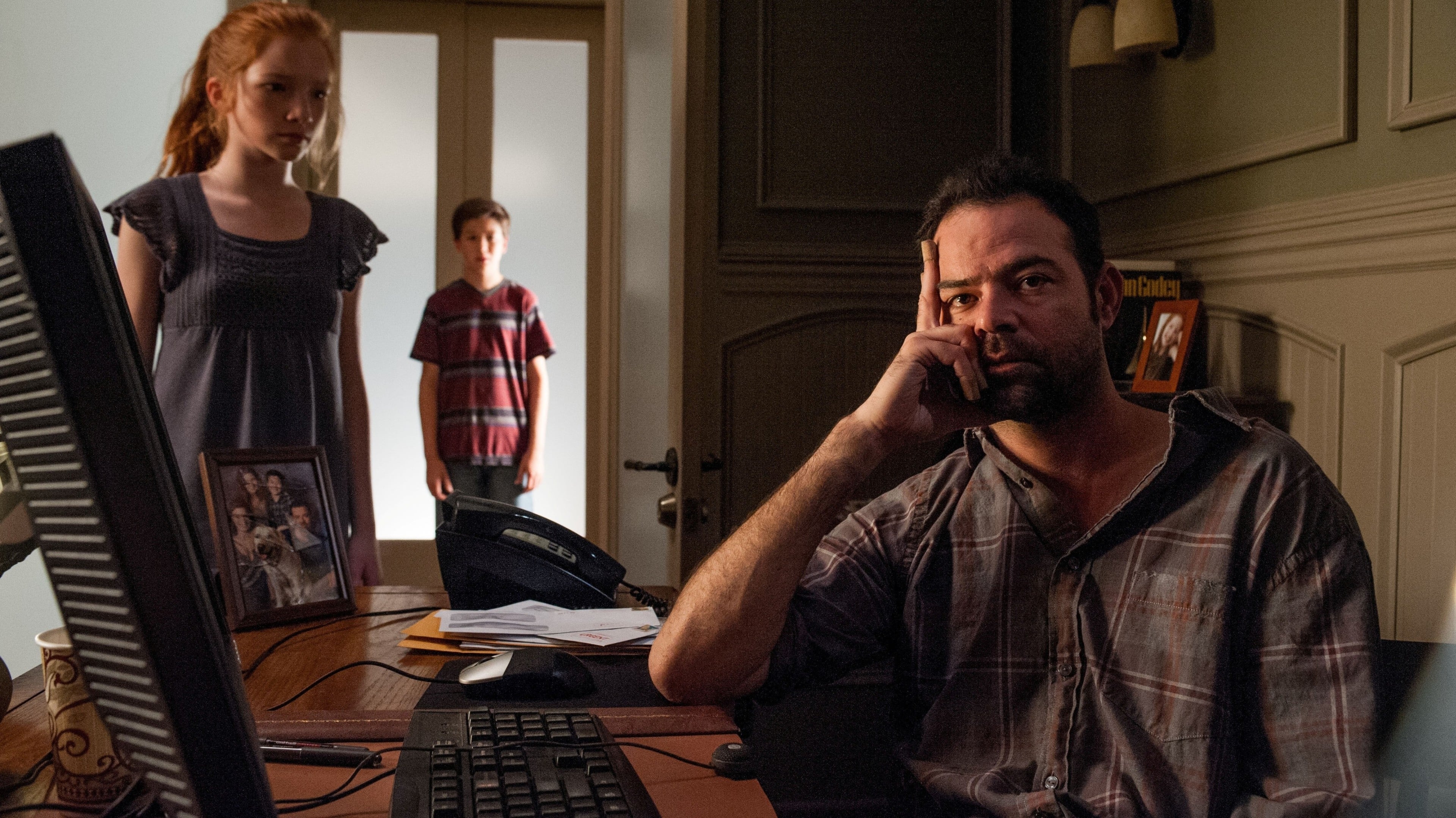
Primal Scream: Dysfunctional Families in Oculus
On the surface, Mike Flanagan’s Oculus (2013) reads like a standard haunted object story. A cursed mirror, The Lasser Glass, is obtained by an upper middle class American family whom it proceeds to haunt and torture. Years later, the adult children of the family seek revenge against the mirror with tragic results. Like any good movie, however, it also works on a deeper level as it symbolically depicts the horror of being trapped in a highly dysfunctional and abusive family. An oculus is a round or eye-like opening or design, and this Oculus gives the viewer a look into the private world of family trauma in which The Lasser Glass symbolizes the psychopathology of the dysfunctional family.
When siblings Kaylie and Tim Russell were 12 and 10 years old respectively (Annalise Basso and Garrett Ryan), the haunted Lasser Glass led to both their parents losing contact with reality. As a result, their father Alan (Rory Cochrane) killed their mother Marie (Katee Sackhoff) and is then shot by Tim. After the authorities intervene, Tim goes to live at a psychiatric hospital while Kaylie enters the foster system for 11 years. During that time Tim and Kaylie engage in behaviors that are common for survivors of abusive families. Tim has distanced himself from the reality of the family, convincing himself that many things didn’t actually happen. Kaylie, however, has remained vigilant and wants to bring the truth about the family to light. She seeks to prove that the mirror is supernatural and to bring the cycle of dysfunction to an end by destroying it. When adult Tim (Brenton Thwaites) is released from treatment, Kaylie (Karen Gillan) tells him that they need to, “Keep our promise & kill it.”
The very structure of Oculus is essential in shedding light on the long term effects of familial trauma. The film skips back and forth in time, the frequency of these jumps increasing as the action escalates. At the climax of the film the past & present are nearly completely meshed. In most highly dysfunctional families the past continues to intrude on and influence the present, making it very hard to change cycles of abuse and trauma. When the Russells originally hang The Lasser Glass in their new home, Young Kaylie and Tim run around and play with their toy laser guns. This is how children their age should be acting, as opposed to the flashes we see of them running and hiding from their father who has a real gun. In the present, Kaylie reminds Tim that they promised to kill the mirror as children and that she intends to act on that promise now. She wants him to help her so they can end the family legacy of abuse together. Kaylie has researched the history of The Lasser Glass and devised an intricate way to prove it is supernatural and to destroy it. Kaylie wants “a lucid objective record” so she can be the truth teller about what happened in the family. She is looking for validation of the trauma she experienced, like so many members of abusive families seek as adults.
As children Tim and Kaylie were trapped with parents who, thanks to The Lasser Glass, were becoming increasingly neglectful and emotionally volatile. As in many dysfunctional families the adults are the unstable and immature ones while the children are forced to take care of themselves and become parentified at an early age. At one point Marie comes close to (accidentally) attacking the mirror, and in retaliation it attacks Marie by driving her mad. Just like an abusive family member it abuses Marie and gets her back into line with the family rules. Alan tries to handle an out-of-control Marie himself, attempting to keep the problem private within the family when it is very clear she needs more help than they can provide. He lies to the kids about the severity of the situation, keeping them in the dark and refusing to answer their questions. Keeping secrets in the family and lack of communication about important issues are both very common in abusive families.
As the dysfunction continues unchecked by the parents, Young Kaylie takes on the role of the parentified child and tells her dad that they need food and a doctor for Marie. His continued neglect pushes Kaylie to defy the family rules and to check on her mother. She discovers that Alan has an animalistic, self-harming Marie chained to the wall. When Alan discovers Kaylie’s defiance he threatens to throw both children out of the house. Abandonment, or threats of it, can be a very effective way of keeping vulnerable children in line in highly dysfunctional families. Kaylie tries everything she can think of to reach out to other adults for help but is stymied at every turn like so many children in abusive families. Painful symbolism of how powerless children can be in dysfunction occurs when she tries to get a neighbor to help, only for Alan to convince the man that Kaylie is just “acting out” while Alan’s bloody fingers are just out of the neighbor’s view.
Vowing to take matters into her own hands, much as she will in adulthood, Young Kaylie tells Tim that “We’re gonna have to get really really brave,” which any child of an abusive family needs to be in order to survive the situation. In the present, Kaylie tries to control The Lasser Glass with a highly organized plan, but it creates chaos around her much like her parents did. It even gaslights her into accidentally killing her fiance, isolating her from people outside the family. Young Kaylie and Tim try to smash the mirror with golf clubs but the dysfunction protects itself and they are unable to do so. As Alan & Marie spin further into the insanity of the mirror, the ghosts of those The Lasser Glass has killed before come out to surround the family and observe them with their mirrored eyes. It’s like the former generations of abuse are descending on the family and encouraging them to continue the intergenerational trauma.

The past and present become closer and closer as the cycle of family dysfunction repeats itself once again. The Lasser Glass reels Kaylie in by presenting her with an idealized image of Marie, speaking to her deep wound around wanting to have a healthy and happy mother again. The mirror presents her with the family she wants and needs in order to kill her. And sadly it brings Tim in to finish the job as in the past. He believes he is changing the cycle by destroying the mirror, but Kaylie is caught in the middle and dies instead. Sadly, like in so many highly abusive & dysfunctional families, the cycle continues unbroken and repeats itself once more.
The Lasser Glass in Oculus becomes emblematic of the patterns of dysfunctional families. Just as the mirror drains life from both plants and pets it also sucks the life energy out of the Russells, making it very hard for them to be fully alive. The mirror is a master gaslighter in the past & present, sculpting a toxic environment where abuse and neglect thrives despite Kaylie and Tim’s resilience.

